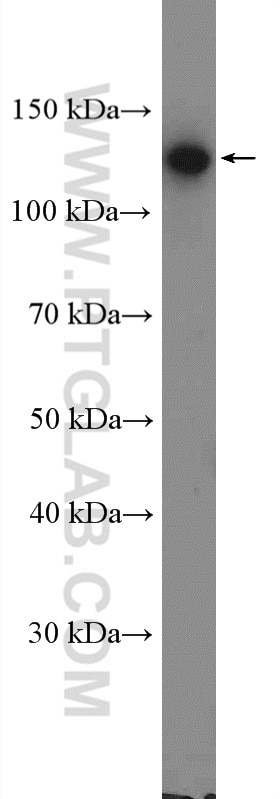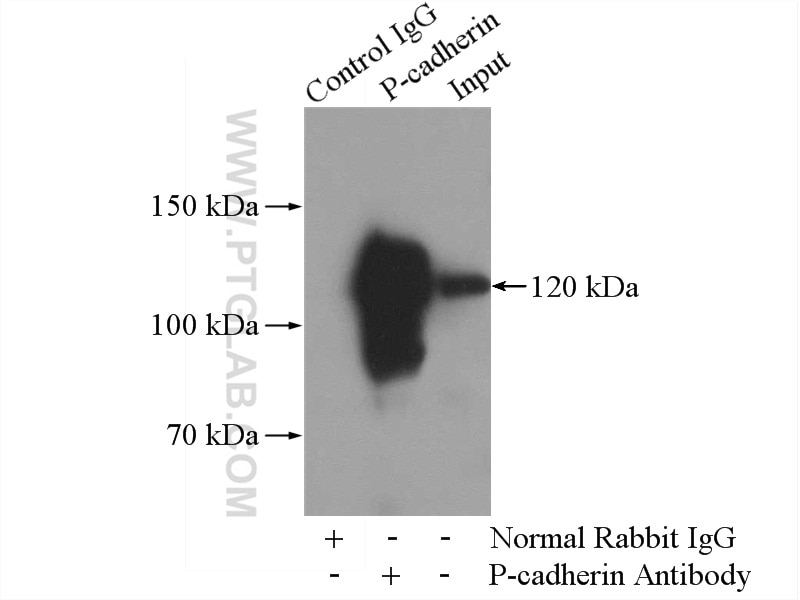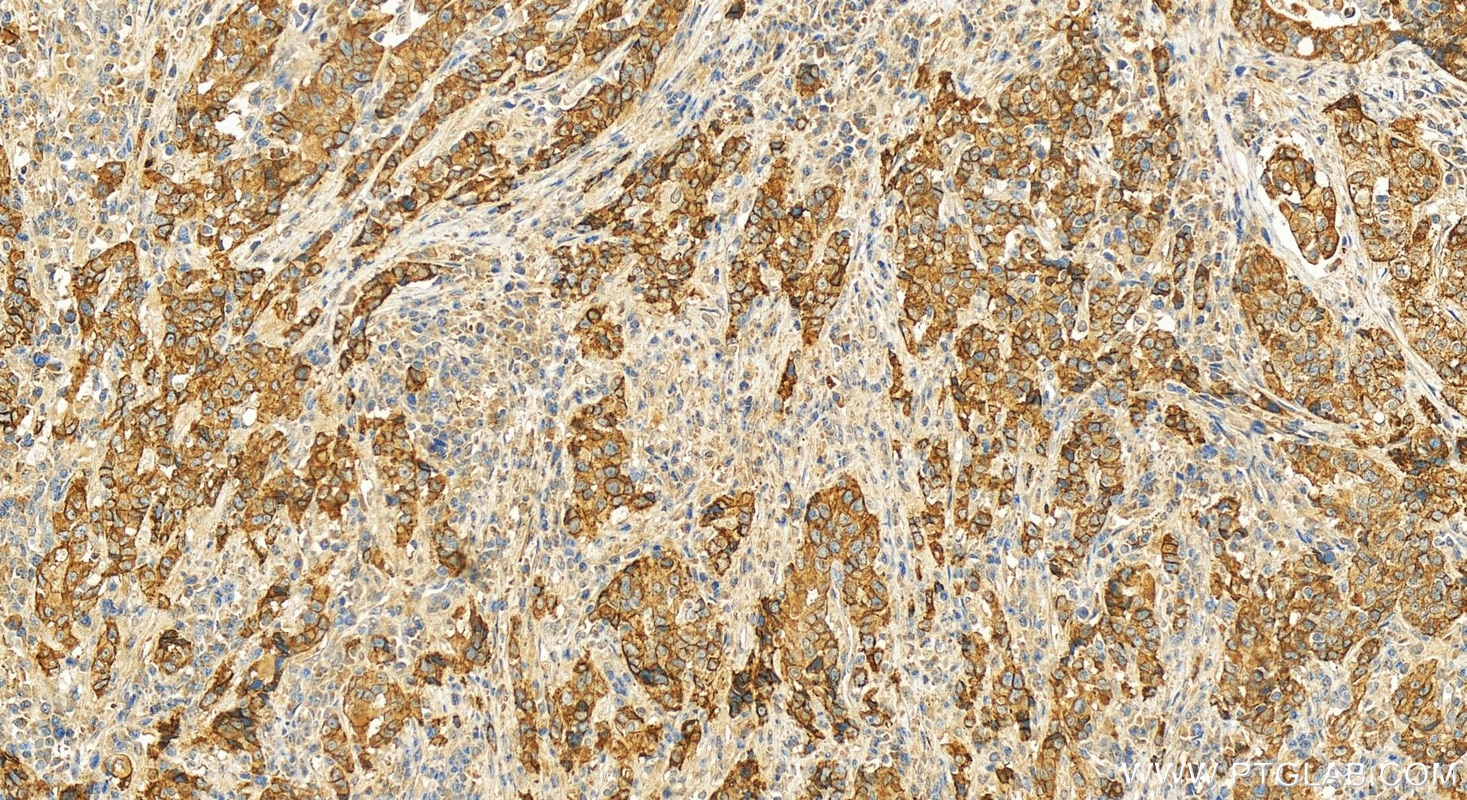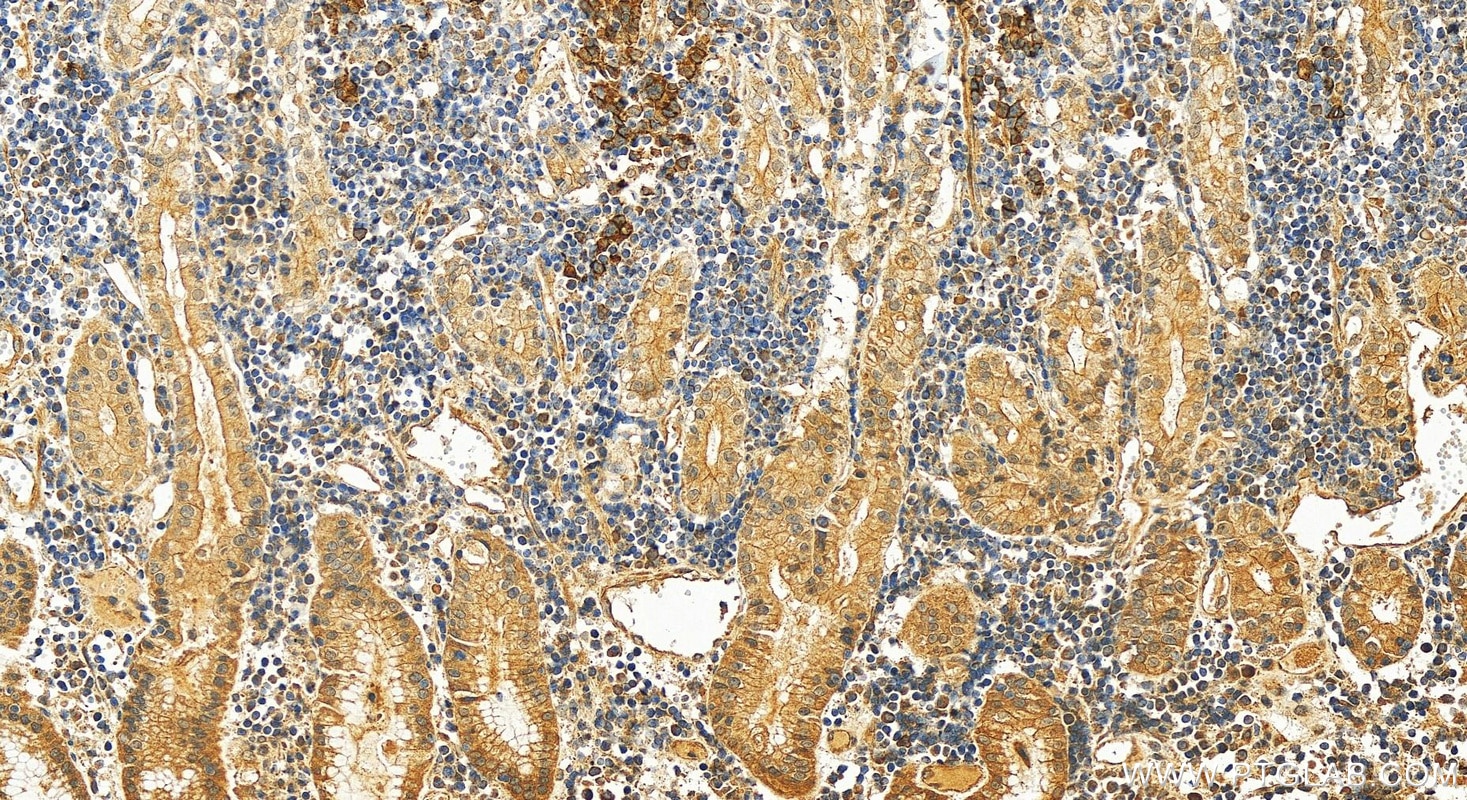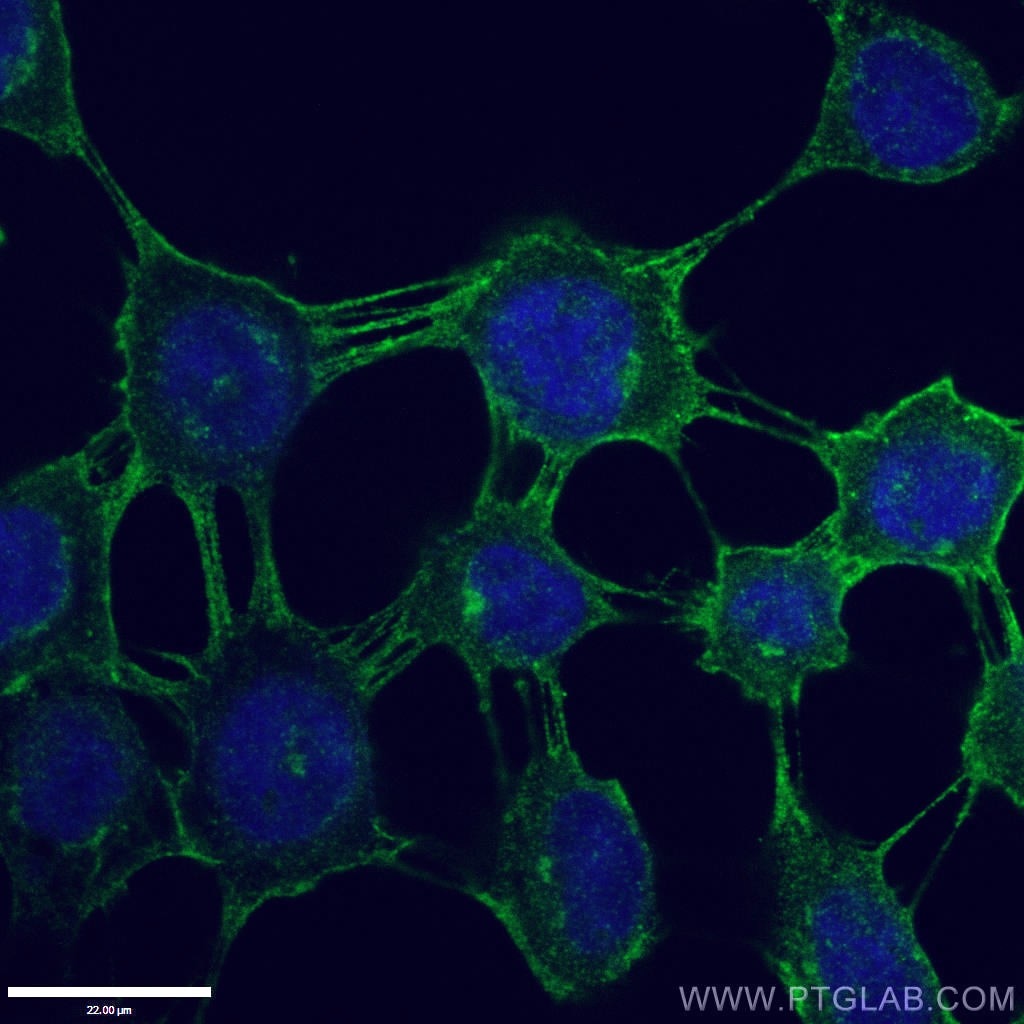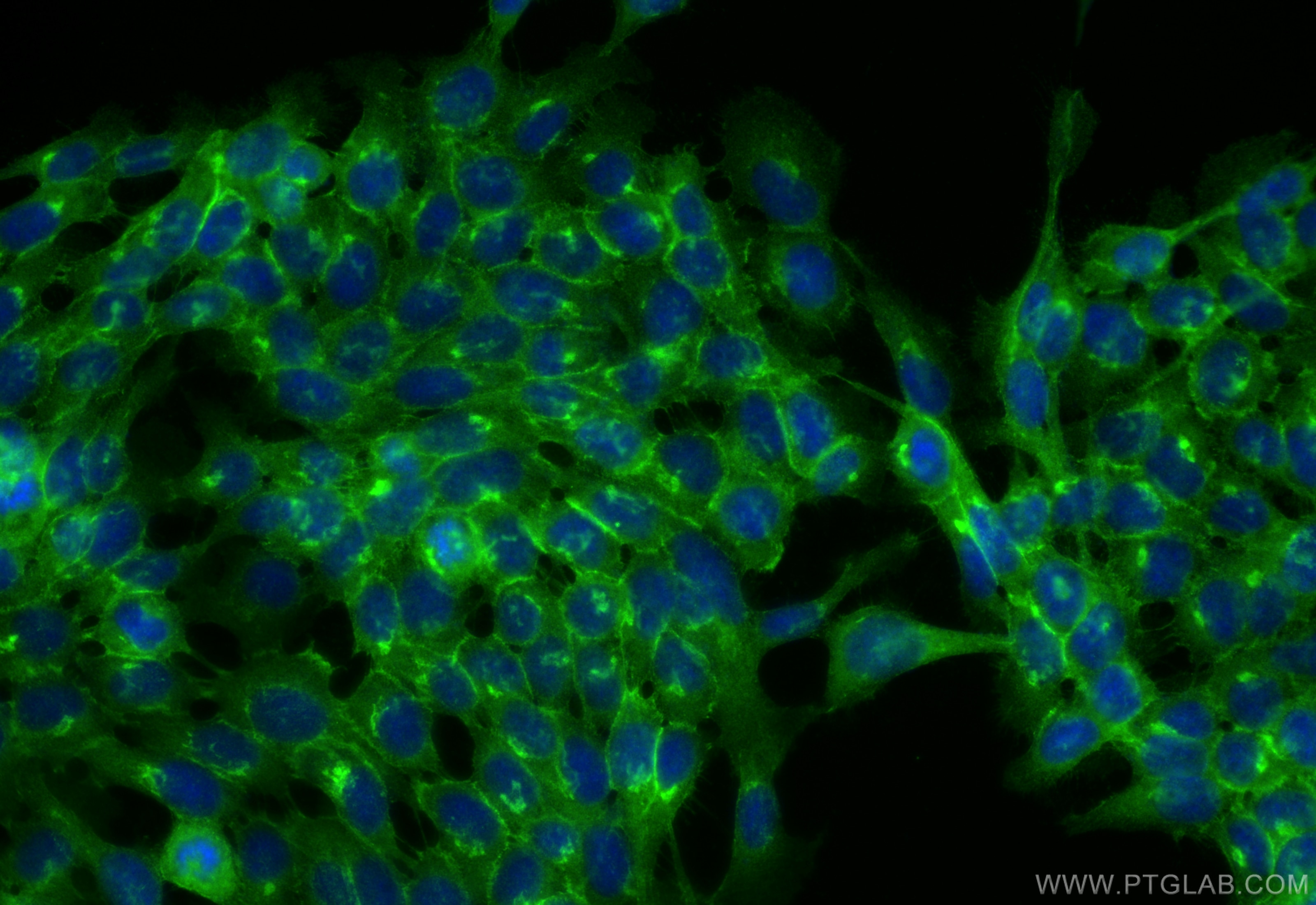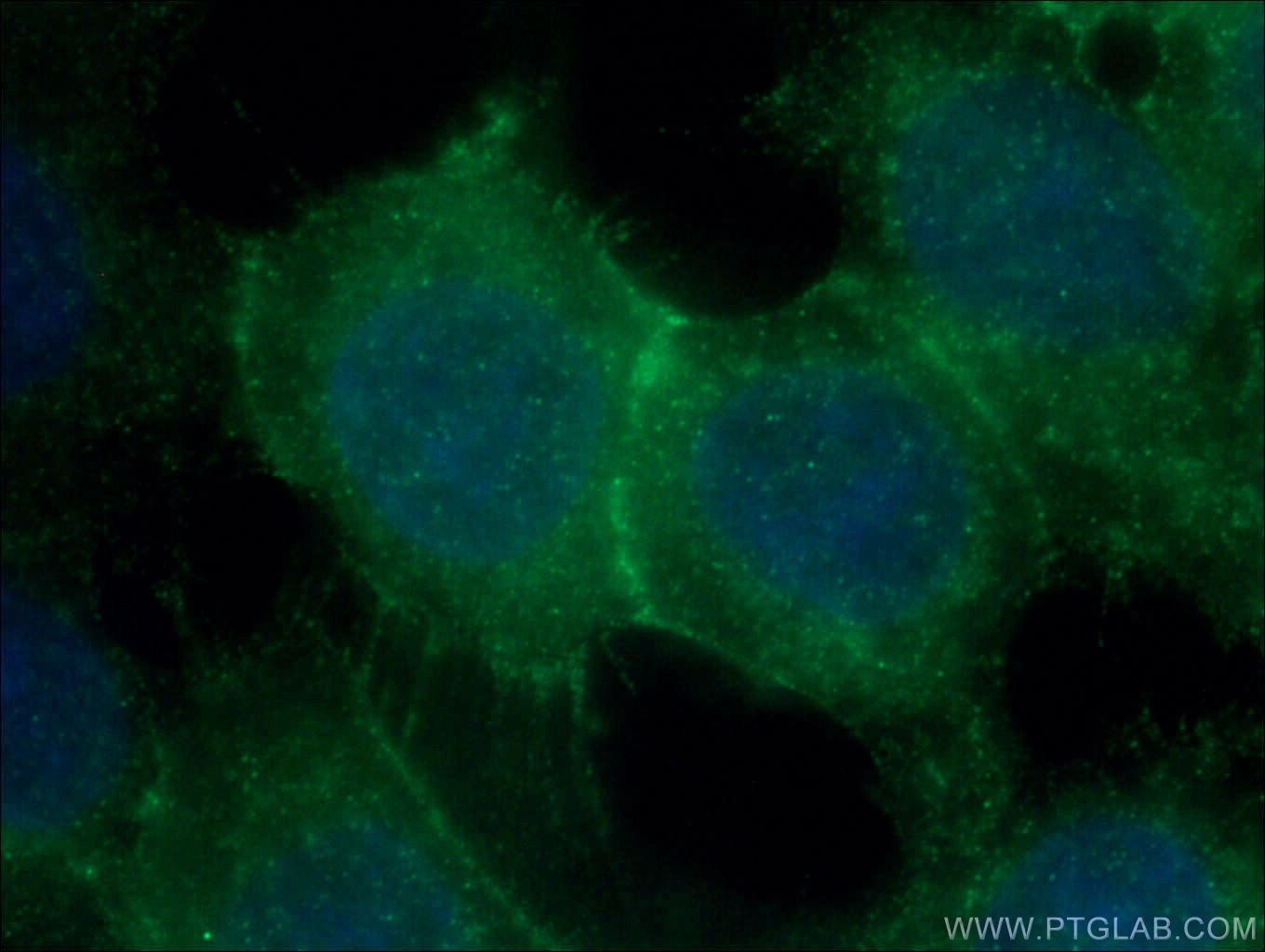Tested Applications
| Positive WB detected in | A431 cells |
| Positive IP detected in | A431 cells |
| Positive IHC detected in | human stomach cancer tissue Note: suggested antigen retrieval with TE buffer pH 9.0; (*) Alternatively, antigen retrieval may be performed with citrate buffer pH 6.0 |
| Positive IF/ICC detected in | A431 cells |
Recommended dilution
| Application | Dilution |
|---|---|
| Western Blot (WB) | WB : 1:500-1:2000 |
| Immunoprecipitation (IP) | IP : 0.5-4.0 ug for 1.0-3.0 mg of total protein lysate |
| Immunohistochemistry (IHC) | IHC : 1:300-1:1200 |
| Immunofluorescence (IF)/ICC | IF/ICC : 1:50-1:500 |
| It is recommended that this reagent should be titrated in each testing system to obtain optimal results. | |
| Sample-dependent, Check data in validation data gallery. | |
Published Applications
| WB | See 9 publications below |
| IHC | See 6 publications below |
| IF | See 3 publications below |
Product Information
13773-1-AP targets P-cadherin in WB, IHC, IF/ICC, IP, ELISA applications and shows reactivity with human, mouse, rat samples.
| Tested Reactivity | human, mouse, rat |
| Cited Reactivity | human, mouse, rat |
| Host / Isotype | Rabbit / IgG |
| Class | Polyclonal |
| Type | Antibody |
| Immunogen |
CatNo: Ag4758 Product name: Recombinant human CDH3 protein Source: e coli.-derived, PGEX-4T Tag: GST Domain: 24-349 aa of BC041846 Sequence: SEPCRAVFREAEVTLEAGGAEQEPGQALGKVFMGCPGQEPALFSTDNDDFTVRNGETVQERRSLKERNPLKIFPSKRILRRHKRDWVVAPISVPENGKGPFPQRLNQLKSNKDRDTKIFYSITGPGADSPPEGVFAVEKETGWLLLNKPLDREEIAKYELFGHAVSENGASVEDPMNISIIVTDQNDHKPKFTQDTFRGSVLEGVLPGTSVMQMTATDEDDAIYTYNGVVAYSIHSQEPKDPHDLMFTIHRSTGTISVISSGLDREKVPEYTLTIQATDMDGDGSTTTAVAVVEILDANDNAPMFDPQKYEAHVPENAVGHEVQRL Predict reactive species |
| Full Name | cadherin 3, type 1, P-cadherin (placental) |
| Calculated Molecular Weight | 829 aa, 91 kDa |
| Observed Molecular Weight | 120 kDa |
| GenBank Accession Number | BC041846 |
| Gene Symbol | P-cadherin |
| Gene ID (NCBI) | 1001 |
| RRID | AB_10596468 |
| Conjugate | Unconjugated |
| Form | Liquid |
| Purification Method | Antigen affinity purification |
| UNIPROT ID | P22223 |
| Storage Buffer | PBS with 0.02% sodium azide and 50% glycerol, pH 7.3. |
| Storage Conditions | Store at -20°C. Stable for one year after shipment. Aliquoting is unnecessary for -20oC storage. 20ul sizes contain 0.1% BSA. |
Background Information
Cadherins are a family of transmembrane glycoproteins that mediate calcium-dependent cell-cell adhesion and play an important role in the maintenance of normal tissue architecture. P-cadherin (placental cadherin), also known as CDH3 (cadherin 3), is a classical member of the cadherin superfamily which also include E-, N-, R-, and B-cadherins. Aberrant expression of P-cadherin has been reported in many cancers, including breast, gastric, endometrial, ovarian, and prostate cancer.
Protocols
| Product Specific Protocols | |
|---|---|
| IF protocol for P-cadherin antibody 13773-1-AP | Download protocol |
| IHC protocol for P-cadherin antibody 13773-1-AP | Download protocol |
| IP protocol for P-cadherin antibody 13773-1-AP | Download protocol |
| WB protocol for P-cadherin antibody 13773-1-AP | Download protocol |
| Standard Protocols | |
|---|---|
| Click here to view our Standard Protocols |
Publications
| Species | Application | Title |
|---|---|---|
Nat Commun Symmetry breaking of tissue mechanics in wound induced hair follicle regeneration of laboratory and spiny mice. | ||
Mol Ther Nucleic Acids Inhibition of the lncRNA MIAT prevents podocyte injury and mitotic catastrophe in diabetic nephropathy. | ||
Aging (Albany NY) Transcriptional dysregulation of TRIM29 promotes colorectal cancer carcinogenesis via pyruvate kinase-mediated glucose metabolism. | ||
Front Oncol Screening and Identification of Key Biomarkers of Gastric Cancer: Three Genes Jointly Predict Gastric Cancer. | ||
Int J Biol Sci KLF4-Mediated CDH3 Upregulation Suppresses Human Hepatoma Cell Growth and Migration via GSK-3β Signaling. | ||
J Oral Pathol Med Basal differentiation and expression status of SOX2 and KLF4 in basal layers are prognostic factors for disease-specific survival in oral squamous cell carcinoma |
